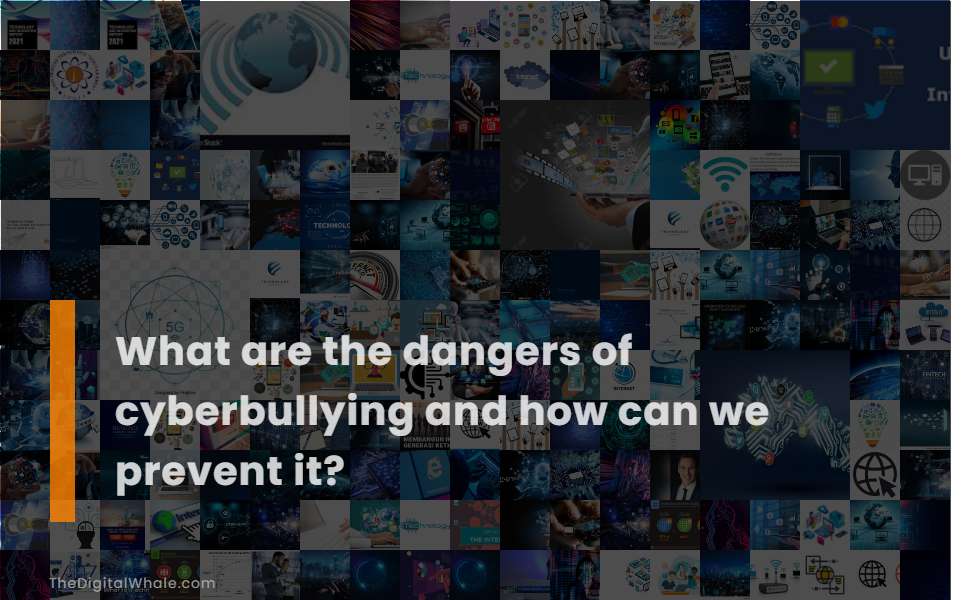What Are the Dangers of Cyberbullying and How Can We Prevent It?
What are the dangers of cyberbullying and how can you help? What are some ways that a child can cyberbullying another child? Let's find out more about What Are the Dangers of Cyberbullying and How Can We Prevent It?.

Negative Emotional Responses: Cyberbullying can lead to anger, depression, frustration, and humiliation.
Cyberbullying can trigger severe negative emotional responses in children, including feelings of overwhelming sadness, hopelessness, depression, anxiety, fear, and anger. It can erode self-esteem, lead to social withdrawal, and even result in suicidal ideation or self-harm due to the relentless and pervasive nature of online harassment. To understand more about the psychological impact of cyberbullying on children, you can visit the article on Cyberbullying and Its Effects on Children. Addressing this issue is crucial for the well-being of young individuals navigating an increasingly digital world.
Low Self-Esteem: Victims of cyberbullying often experience a decline in self-esteem.
Cyberbullying can significantly affect the self-esteem of victims, leading to a crippling decline in their confidence. For instance, individuals often become self-conscious and develop low self-esteem, especially when the harassment focuses on their physical appearances and looks. This can lead to feelings of shame and social isolation, as detailed in studies found on Cyberwise. Such an attack on their personal identity can manifest as both a cause and effect of being cyberbullied. The impact is particularly severe in adolescents, where it profoundly interferes with their psychological adjustment and identity development, underscoring the importance of addressing and mitigating the repercussions of cyberbullying to safeguard mental health.
Direct Harassment: Includes hateful, insulting, or rude messages via text, email, or social media.
Direct harassment in cyberbullying involves sending hateful, insulting, or rude messages via text, email, or social media, which can lead to severe mental health consequences such as anxiety, depression, and a decline in self-esteem. To combat this issue, bystanders can play a crucial role by directly intervening through calling out the harassment and offering support to the victim or indirectly by reporting and documenting incidents. Additionally, it is essential to educate oneself about cyberbullying, protect passwords and personal information, and set up privacy controls on social media profiles to restrict access to trusted friends only. For more comprehensive strategies to tackle cyberbullying, you may explore these Bystander Intervention Techniques to navigate social media safely.
Forgery and Impersonation: Creating fake accounts or hacking into someone's profile to post offensive content.
Forgery and impersonation in cyberbullying involve creating fake accounts or hacking into someone's profile to post offensive or unwanted content. To prevent this, it is crucial to be diligent with online posting behavior, limit personal information and photos, and ensure secure passwords that are changed regularly. For comprehensive strategies to combat this growing issue, visit the Kaspersky Resource Center for expert advice and tips on how to stop cyberbullying.
Information Theft and Unlawful Sharing: Sharing personal or embarrassing information without consent.
Cyberbullying involving information theft and unlawful sharing poses a significant threat, often including the unauthorized posting of personal or embarrassing details, a practice known as doxing. This can manifest in the form of spreading harmful rumors or sharing explicit or degrading photos and videos without consent, severely affecting a person's self-esteem and confidence. Such activities often cross into illegal territories and should be reported to the authorities when encountered. To understand more about this serious issue, the Kaspersky Resource Center offers valuable insights into preventing and addressing the dangers of cyberbullying.
Related:
What does too much screen time do to kids' brains? What are the benefits of screen time for young children? Let's find out more about Is "Screen Time" Harmful To Children's Health and Development?.
Exclusion: Intentionally leaving someone out of online groups or message threads.
Exclusion in cyberbullying encompasses the deliberate act of leaving someone out of online groups, message threads, or various digital activities. This type of behavior can foster a sense of isolation, severely impacting the victim's social relationships both online and offline. The repercussions often extend beyond virtual spaces, affecting the individual's participation in offline social events and potentially leading to profound emotional distress. Such exclusion, whether occurring on social media, through group messages, or within online gaming communities, underscores the significant emotional challenges victims of cyberbullying face in maintaining positive interactions and mental well-being.
Cyberstalking: Monitoring a victim's online presence closely.
Cyberstalking, a form of cyberbullying, involves closely monitoring a victim's online presence, which can lead to significant emotional and psychological harm, including anxiety, depression, and even physical trauma. To prevent this, parents and individuals should monitor online activities, set privacy settings, and report any suspicious or harmful behavior to the relevant platforms and law enforcement if necessary. For more information on managing these risks and finding support, visit the Social Media Victims Law Center, a resource dedicated to combating online harassment and protecting victims' rights.
Use of Privacy Settings: Adjusting settings to keep content private and limiting who can view and interact with online content.
Adjusting privacy settings is crucial in preventing cyberbullying, as it protects users' personal information from being misused and limits who can view and interact with their online content, thereby reducing the risk of identity theft and harassment. Managing privacy settings on social media platforms, such as setting profiles to private, filtering followers, and controlling who can see posts, helps minimize the risk of online harassment and cyberbullying by restricting access to personal content. For more comprehensive strategies on enhancing online safety, explore the guide provided by Canopy. Setting up strict privacy settings on social media accounts and devices, including making profiles private, approving friend requests, and disabling location sharing, significantly reduces the risk of cyberbullying by limiting who can interact with and view online content.
Avoiding Engagement: Ignoring cyberbullies and not responding to their messages to minimize their power.
Ignoring cyberbullies and not responding to their messages is crucial as it minimizes their power and prevents the situation from escalating. Responding or retaliating can provoke the bully and make the situation worse, so it's important to block the bully, report the incidents, and focus on positive activities to manage stress and maintain perspective. Walking away from cyberbullies and avoiding engagement is key. According to HelpGuide, ignoring the messages, not forwarding them, and taking a break from the situation helps to deprive the bully of the reaction they seek, thereby reducing their power and the impact of their actions.
Educating and Reporting: Educating oneself and others about cyberbullying, and reporting incidents to appropriate authorities.
Educating oneself and others about cyberbullying is crucial and can involve teaching digital citizenship skills, implementing school-based prevention programs, and promoting a healthy school climate through social-emotional learning. It's important for families and schools to work together to educate children about safe online behavior and the potential consequences of cyberbullying. Offering comfort and support, as well as reassuring children that itâs not their fault, are essential steps. When incidents occur, they should be promptly reported to online service providers, schools, and law enforcement. Keeping records of evidence is vital for addressing and preventing further incidents. For additional resources on these preventive measures, the Cyberbullying Prevention and Intervention guide provides extensive information on the necessary steps to take in cases involving illegal activities or physical threats.
Related:
Paraphrase an article or talk to a friend about a subject you are interested in. Do you find it difficult to balance your online and offline lives? Why or why not? Let's find out more about How Can We Strike A Balance Between Life Online and Offline?.
